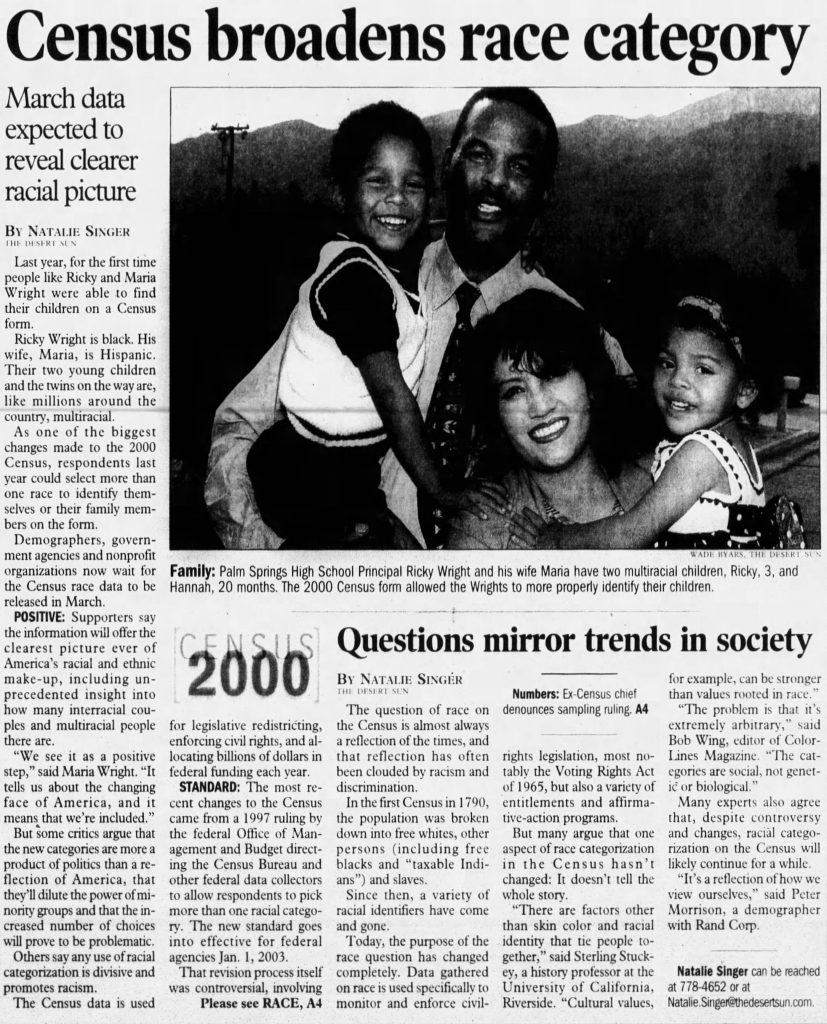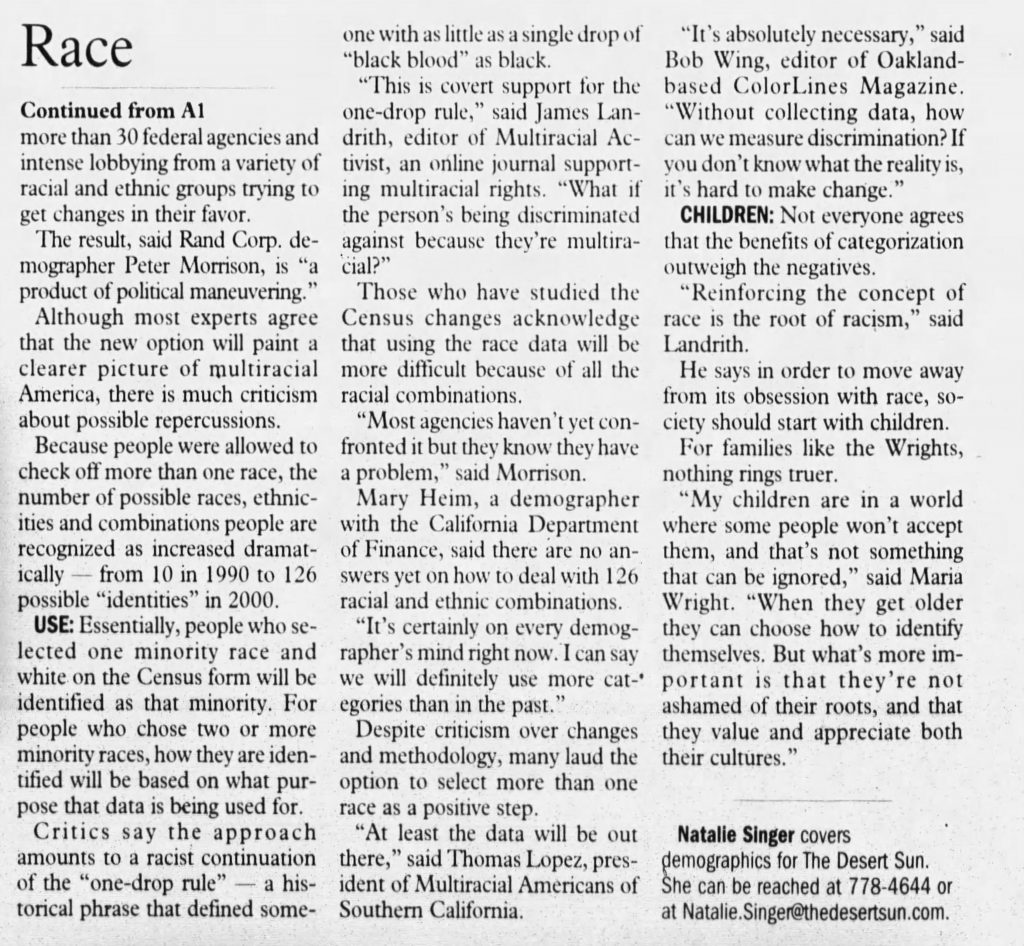Census broadens race category
March data expected to reveal clearer racial picture
By Natalie Singer
The Desert Sun
February 23, 2001
Last year, for the first time people like Ricky and Maria Wright were able to find their children on a Census form.
Ricky Wright is black. His wife, Maria, is Hispanic. Their two young children and the twins on the way are, like millions around the country, multiracial.
As one of the biggest changes made to the 2000 Census, respondents last year could select more than one race to identify themselves or their family members on the form.
Demographers, government agencies and nonprofit organizations now wait for the Census race data to be released in March.
Positive: Supporters say the information will offer the clearest picture ever of America’s racial and ethnic make-up, including unprecedented insight into how many interracial couples and multiracial people there are.
“We see it as a positive step,” said Maria Wright. “It tells us about the changing face of America, and it means that we’re included.”
But some critics argue that the new categories are more a product of politics than a reflection of America, that they’ll dilute the power of minority groups and that the increased number of choices will prove to be problematic.
Others say any use of racial categorization is divisive and promotes racism.
The Census data is used for legislative redistricting, enforcing civil rights, and allocating billions of dollars in federal funding each year.
Standard: The most recent changes to the Census came from a 1997 ruling by the federal Office of Management and Budget directing the Census Bureau and other federal data collectors to allow respondents to pick more than one racial category. The new standard goes into effective for federal agencies Jan. 1, 2003.
That revision process itself was controversial, involving more than 30 federal agencies and intense lobbying from a variety of racial and ethnic groups trying to get changes in their favor.
The result, said Rand Corp. demographer Peter Morrison, is “a product of political maneuvering.”
Although most experts agree that the new option will paint a clearer picture of multiracial America, there is much criticism about possible repercussions.
Because people were allowed to check off more than one race, the number of possible races, ethnicities and combinations people are recognized as increased dramatically — from 10 in 1990 to 126 possible “identities” in 2000.
Use: Essentially, people who selected one minority race and white on the Census form will be identified as that minority. For people who chose two or more minority races, how they are identified will be based on what purpose that data is being used for.
Critics say the approach amounts to a racist continuation of the “one-drop rule” — a historical phrase that defined someone with as little as a single drop of “black blood” as black.
“This is covert support for the one-drop rule,” said James Landrith, editor of Multiracial Activist, an online journal supporting multiracial rights. “What if the person’s being discriminated against because they’re multiracial?”
Those who have studied the Census changes acknowledge that using the race data will be more difficult because of all the racial combinations.
“Most agencies haven’t yet confronted it but they know they have a problem,” said Morrison.
Mary Heim, a demographer with the California Department of Finance, said there are no answers yet on how to deal with 126 racial and ethnic combinations.
“It’s certainly on every demographer’s mind right now. I can say we will definitely use more categories than in the past.”
Despite criticism over changes and methodology, many laud the option to select more than one race as a positive step.
“At least the data will be out there,” said Thomas Lopez, president of Multiracial Americans of Southern California.
“It’s absolutely necessary,” said Bob Wing, editor of Oakland-based ColorLines Magazine. “Without collecting data, how can we measure discrimination? If you don’t know what the reality is, it’s hard to make change.”
Children: Not everyone agrees that the benefits of categorization outweigh the negatives.
“Reinforcing the concept of race is the root of racism,” said Landrith.
He says in order to move away from its obsession with race, society should start with children.
For families like the Wrights, nothing rings truer.
“My children are in a world where some people won’t accept them, and that’s not something that can be ignored,” said Maria Wright. “When they get older they can choose how to identify themselves. But what’s more important is that they’re not ashamed of their roots, and that they value and appreciate both their cultures.”
Copyright 2001 The Desert Sun



